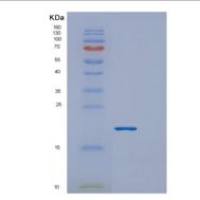生态系统硝酸盐和有机碳浓度间的反向关系
互联网
水环境中硝酸盐的积累(主要由化肥的使用造成)会造成环境问题和公共卫生问题。
现在,Philip Taylor 和 Alan Townsend在土壤、淡水生态系统和海洋(包括经历实质性氮加载的生态系统)的硝酸盐和有机碳浓度之间发现一个一致的反向关系。他们发现,这个模式可用碳-硝酸盐比例来解释,该比例通过调控对溶解的有机碳和硝酸盐循环进行耦合的微生物过程影响硝酸盐积累。
这些结果可以为分析全世界生态系统中硝酸盐的命运及人类干预的影响提供一个可以验证的框架。
点击此处下载原文
Stoichiometric control of organic carbon–nitrate relationships from soils to the sea
Philip G. Taylor1,2 & Alan R. Townsend1,2
1.INSTAAR and,
2.Department of Ecology and Evolutionary Biology, University of Colorado, Boulder, Colorado,
USA
The production of artificial fertilizers, fossil fuel use and leguminous agriculture worldwide has increased the amount of reactive nitrogen in the natural environment by an order of magnitude since the Industrial Revolution. This reorganization of the nitrogen cycle has led to an increase in food production, but increasingly causes a number of environmental problems. One such problem is the accumulation of nitrate in both freshwater and coastal marine ecosystems. Here we establish that ecosystem nitrate accrual exhibits consistent and negative nonlinear correlations with organic carbon availability along a hydrologic continuum from soils, through freshwater systems and coastal margins, to the open ocean. The trend also prevails in ecosystems subject to substantial human alteration. Across this diversity of environments, we find evidence that resource stoichiometry (organic carbon:nitrate) strongly influences nitrate accumulation by regulating a suite of microbial processes that couple dissolved organic carbon and nitrate cycling. With the help of a meta-analysis we show that heterotrophic microbes maintain low nitrate concentrations when organic carbon:nitrate ratios match the stoichiometric demands of microbial anabolism. When resource ratios drop below the minimum carbon:nitrogen ratio of microbial biomass, however, the onset of carbon limitation appears to drive rapid nitrate accrual, which may then be further enhanced by nitrification. At low organic carbon:nitrate ratios, denitrification appears to constrain the extent of nitrate accretion, once organic carbon and nitrate availability approach the 1:1 stoichiometry5 of this catabolic process. Collectively, these microbial processes express themselves on local to global scales by restricting the threshold ratios underlying nitrate accrual to a constrained stoichiometric window. Our findings indicate that ecological stoichiometry can help explain the fate of nitrate across disparate environments and in the face of human disturbance.









